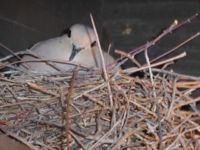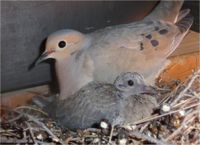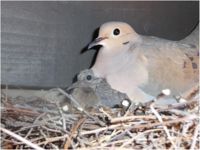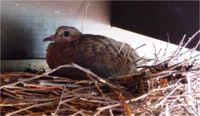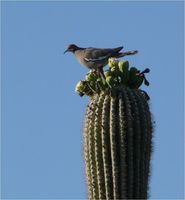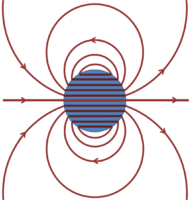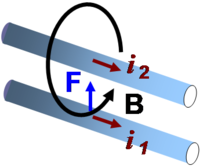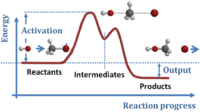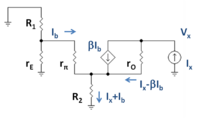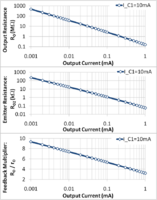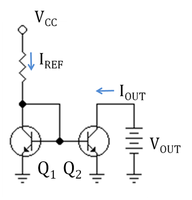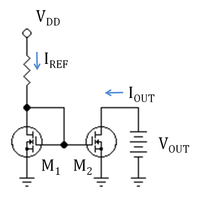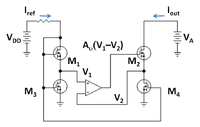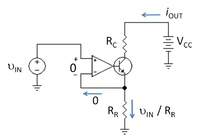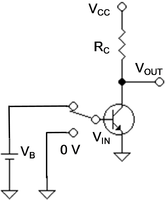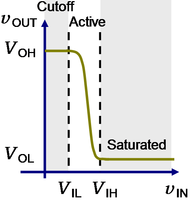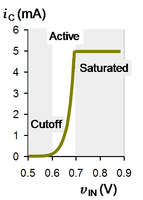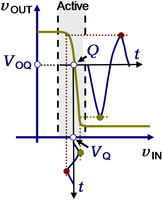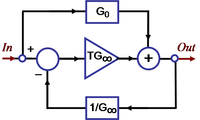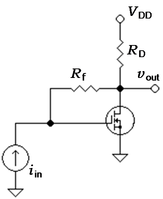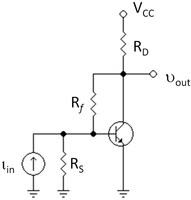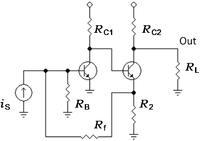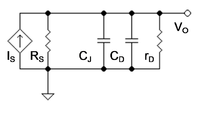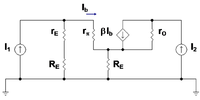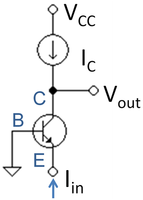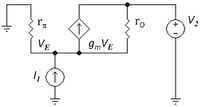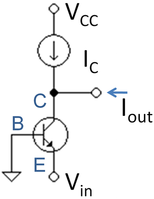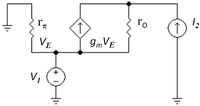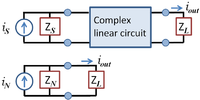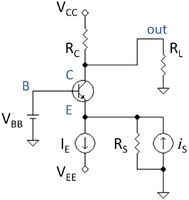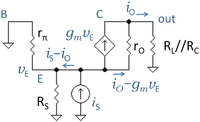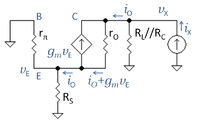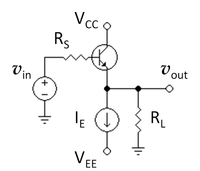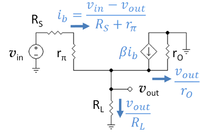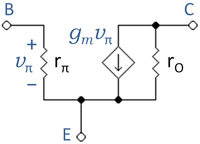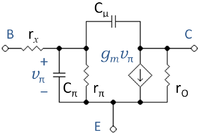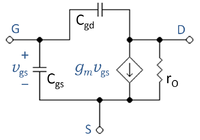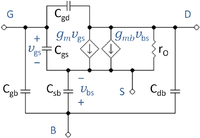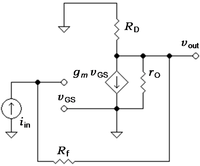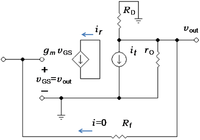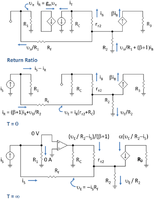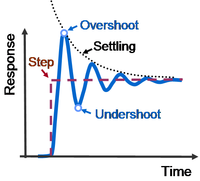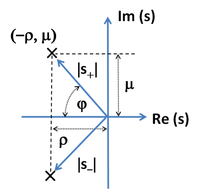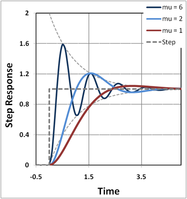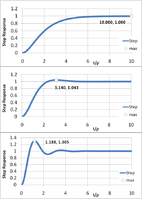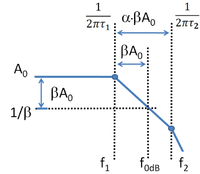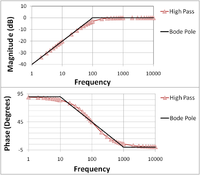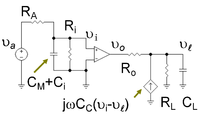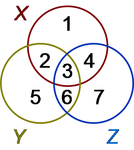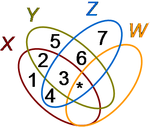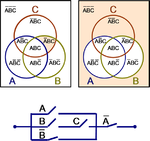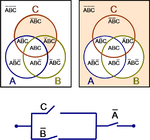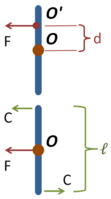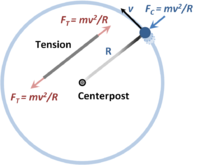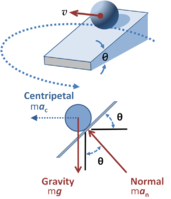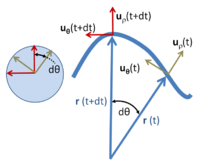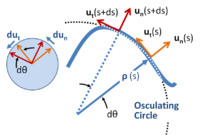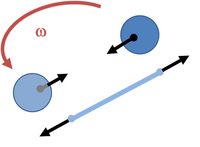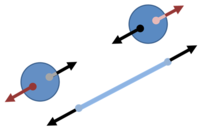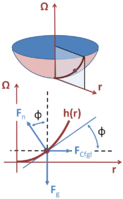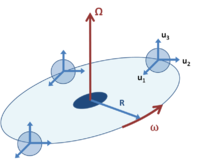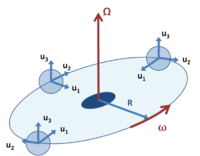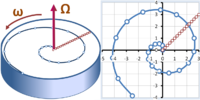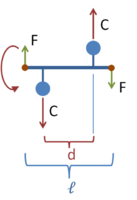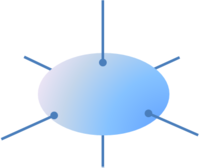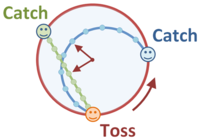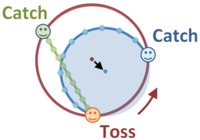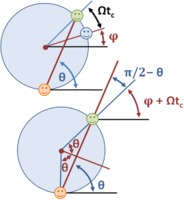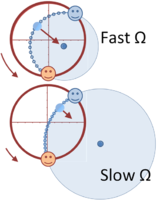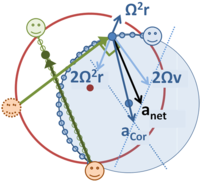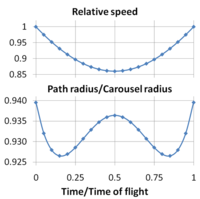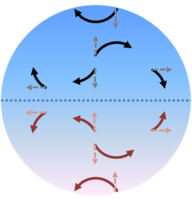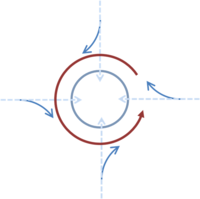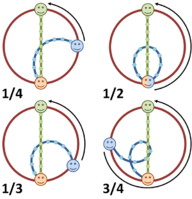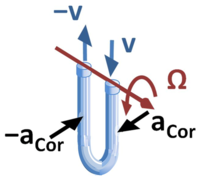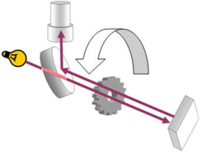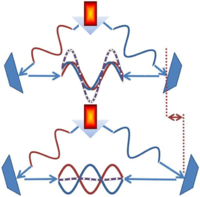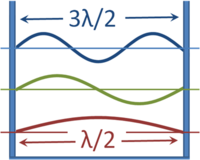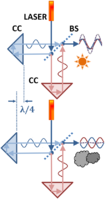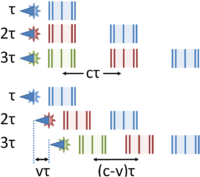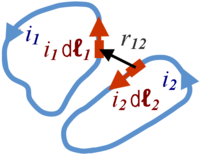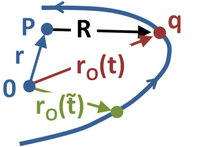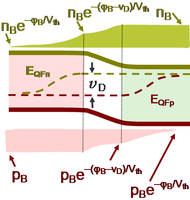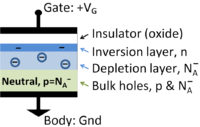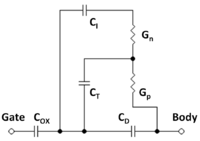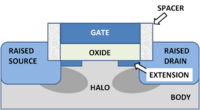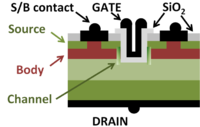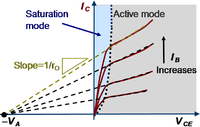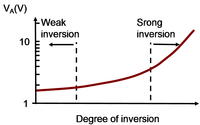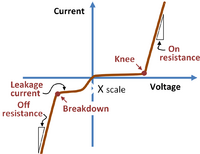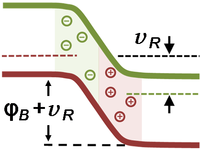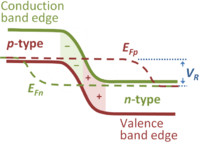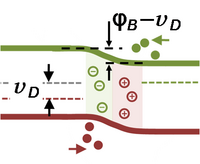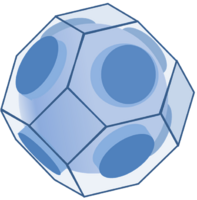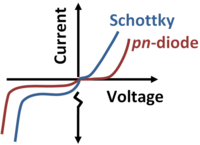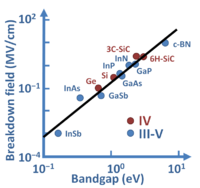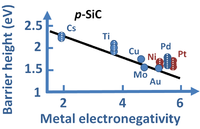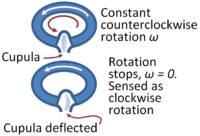User:John R. Brews/Images: Difference between revisions
Jump to navigation
Jump to search
imported>John R. Brews No edit summary |
No edit summary |
||
| (59 intermediate revisions by one other user not shown) | |||
| Line 1: | Line 1: | ||
{{AccountNotLive}} | |||
{{DEFAULTSORT:Brews, John R.}} | {{DEFAULTSORT:Brews, John R.}} | ||
{{TOC|right}} | {{TOC|right}} | ||
Angle brackets: & #x27E8; <nowiki>=</nowiki> ⟨   & #x27E9; <nowiki>=</nowiki> ⟩   & #10216; <nowiki>=</nowiki> ⟨   & #10217;<nowiki>=</nowiki> ⟩ | Angle brackets: & #x27E8; <nowiki>=</nowiki> ⟨   & #x27E9; <nowiki>=</nowiki> ⟩   & #10216; <nowiki>=</nowiki> ⟨   & #10217;<nowiki>=</nowiki> ⟩ <nowiki><Φ|Ψ></nowiki> <Φ|Ψ> <big><nowiki><</nowiki></big>Φ|Ψ<big><nowiki>></nowiki></big> ⟨Φ|Ψ⟩ ⟨Φ|Ψ⟩ <math>\langle \Phi|\Psi \rangle </math> ⟨Φ|Ψ⟩ '''⟨'''Φ|Ψ'''⟩''' | ||
==Photos== | ==Photos== | ||
{{Gallery-mixed | {{Gallery-mixed | ||
|caption=Photos | |caption=Photos | ||
|width=200 | |width=200 | ||
|lines=5 | |lines=5 | ||
|Mourning dove nest.JPG|Mourning dove on nest in Tucson | |Mourning dove nest.JPG|Mourning dove on nest in Tucson | ||
|Mourning dove and squab.JPG|Morning dove with squab, Tucson AZ. | |||
|Dove with squab.JPG|Mourning dove with squab. | |||
|Mourning dove squab.JPG|Mourning dove squab. | |||
|Dove on saguaro.JPG|Mourning dove on saguaro cactus, Tucson AZ. | |||
}} | }} | ||
==Magnetism== | ==Magnetism== | ||
{{Gallery-mixed | {{Gallery-mixed | ||
| Line 16: | Line 22: | ||
|Magnetized sphere.PNG|'''B'''-field lines near uniformly magnetized sphere | |Magnetized sphere.PNG|'''B'''-field lines near uniformly magnetized sphere | ||
|Hysteresis loops.PNG|Magnetic flux density ''vs.'' magnetic field in steel and iron | |Hysteresis loops.PNG|Magnetic flux density ''vs.'' magnetic field in steel and iron | ||
|Parallel wires.PNG|'''''B'''''-field from current '''''I<sub>2</sub>''''' in wire ''2'' causes force '''''F''''' on wire ''1''. | |||
}} | }} | ||
==Chemistry== | |||
{{Gallery-mixed | |||
|caption=Chemistry | |||
|width=200 | |||
|lines=5 | |||
|Reaction path.PNG|Reactants cross an energy barrier, enter an [[Transition state|intermediate state]] and finally emerge in a lower energy configuration. | |||
}} | |||
==Circuits== | ==Circuits== | ||
{{Gallery-mixed | {{Gallery-mixed | ||
|caption= | |caption=Current sources | ||
|width=200 | |width=200 | ||
|lines=5 | |lines=5 | ||
| Line 25: | Line 41: | ||
|Widlar small-signal.PNG|Small-signal circuit for finding output resistance of the Widlar source | |Widlar small-signal.PNG|Small-signal circuit for finding output resistance of the Widlar source | ||
|Widlar Resistance Plot.PNG|Design trade-off between output resistance and output current in Widlar source | |Widlar Resistance Plot.PNG|Design trade-off between output resistance and output current in Widlar source | ||
|Simple bipolar mirror.PNG|A current mirror implemented with npn bipolar transistors using a resistor to set the reference current I<sub>REF</sub>; V<sub>CC</sub><nowiki> = </nowiki>supply voltage. | |||
|Simple MOSFET mirror.PNG| An n-channel MOSFET current mirror with a resistor to set the reference current | |||
|Gain-assisted current mirror.PNG| Gain-boosted current mirror with op amp feedback to increase output resistance. | |||
|Wide-swing MOSFET mirror.PNG| MOSFET version of wide-swing current mirror; M<sub>1</sub> and M<sub>2</sub> are in active mode | |||
|Current sink.PNG|Operational-amplifier based current sink. Because the op amp is modeled as a nullor, op amp input variables are zero regardless of the values for its output variables. | |||
|Bipolar inverter.PNG|A digital inverter circuit using a bipolar transistor. | |||
|Transfer characteristic of bipolar inverter.PNG|Transfer characteristic of bipolar inverter showing modes. | |||
|Current in bipolar inverter.PNG|Collector current ''vs.'' input voltage for a bipolar inverter with ''V<sub>CC</sub>''<nowiki>=</nowiki>5V and ''R<sub>C</sub>''<nowiki>=</nowiki>1kΩ. | |||
|Amplifier input and output.PNG|Input and output signals for bipolar inverter used as an amplifier. | |||
|Two-port with Thevenin driver.PNG| Two-port network with symbol definitions. | |||
|Z-equivalent two-port.PNG| Z-equivalent two port showing independent variables ''I<sub>1</sub>'' and ''I<sub>2</sub>''. | |||
|Y-equivalent two-port.PNG| Y-equivalent two port showing independent variables | |||
|H-equivalent two-port.PNG|H-equivalent two-port showing independent variables | |||
|G-equivalent two-port.PNG| G-equivalent two-port showing independent variables | |||
|Block diagram asymptotic gain.PNG|Block diagram for asymptotic gain model | |||
|Signal-flow graph for asymptotic gain model.PNG|Possible signal-flow graph for the asymptotic gain model | |||
|MOSFET Transresistance amplifier.PNG| MOSFET transresistance feedback amplifier. | |||
|Bipolar transresistance feedback amplifier.PNG| Collector-to-base biased bipolar amplifier. | |||
|Shunt-series feedback amplifier.PNG|Two-transistor feedback amplifier; any source impedance ''R<sub>S</sub>'' is lumped in with the base resistor ''R<sub>B</sub>''. | |||
}} | }} | ||
{{Gallery-mixed | |||
|caption=Small-signal circuits | |||
|width=200 | |||
|lines=5 | |||
|PN-diode small-signal circuit2.PNG|Small-signal circuit for ''pn-''diode driven by a current signal represented as a [[Norton's theorem|Norton source]]. | |||
|Bipolar current mirror with emitter resistors.PNG| Bipolar current mirror with emitter resistors | |||
|Small-signal circuit for bipolar mirror.PNG| Small-signal circuit for bipolar current mirror | |||
|Common base with current drive.PNG| Common base circuit with active load and current drive. | |||
|Common base with current driver.PNG|Common-base amplifier with AC current source ''I<sub>1</sub>'' as signal input | |||
|Common base with voltage drive.PNG|Bipolar transistor with base grounded and signal applied to emitter. | |||
|Small-signal common base circuit.PNG|Common-base amplifier with AC voltage source ''V<sub>1</sub>'' as signal input | |||
|Norton equivalent circuit.PNG|The result of applying Norton's theorem. | |||
|Current follower.PNG|Bipolar current buffer. | |||
|Current follower; small-signal.PNG|Small-signal circuit to find output current. | |||
|Current follower output resistance.PNG|Small-signal circuit with test current ''i<sub>X</sub>'' to find Norton resistance. | |||
|Thevenin equivalent circuit.PNG|The result of applying Thévenin's theorem. | |||
|Voltage Follower.PNG|Bipolar buffer. | |||
|Voltage Follower Small-signal.PNG|Small-signal circuit for voltage follower. | |||
|Voltage follower output resistance.PNG|Determination of the small-signal output resistance. | |||
|Bipolar hybrid-pi model.PNG| Simplified, low-frequency hybrid-pi [[BJT]] model. | |||
|Bipolar hybrid-pi capacitances.PNG|Bipolar hybrid-pi model with parasitic capacitances. | |||
|Bipolar hybrid-pi model.PNG| Simplified, low-frequency hybrid-pi [[BJT]] model. | |||
|Bipolar hybrid-pi capacitances.PNG|Bipolar hybrid-pi model with parasitic capacitances. | |||
|MOSFET hybrid-pi with capactances.PNG|Simplified, three-terminal MOSFET hybrid-pi model. | |||
|MOSFET four-terminal hybrid-pi circuit.PNG|Four-terminal small-signal MOSFET circuit. | |||
|Miller effect.PNG|Miller effect: These two circuits are equivalent. | |||
|Small-signal transresistance amplifier.PNG| Small-signal circuit for transresistance amplifier | |||
|Return ratio.PNG|Small-signal circuit with return path broken and test current ''i<sub>t</sub>'' driving amplifier at the break. | |||
|Using return ratio.PNG|Three small-signal schematics used to discuss the asymptotic gain model | |||
}} | |||
{{Gallery-mixed | |||
|caption=Return ratio | |||
|width=500 | |||
|lines=5 | |||
|Inserting source for return ratio.PNG|''Left'' - small-signal circuit corresponding to bipolar amplifier; ''Center'' - inserting independent source and marking leads to be cut; ''Right'' - cutting the dependent source free and short-circuiting broken leads. | |||
}} | |||
{{Gallery-mixed | |||
|caption=Amplifiers | |||
|width=200 | |||
|lines=5 | |||
|Aspects of step response.PNG|Some terms used to describe step response in time domain. | |||
|Negative feedback amplifier.PNG|Ideal negative feedback model; open loop gain is ''A''<sub>OL</sub> and feedback factor is β. | |||
|Conjugate poles.PNG|Conjugate pole locations for step response of two-pole feedback amplifier. | |||
|Step response of negative feedback amplifier.PNG| Step-response of a linear two-pole feedback amplifier. | |||
|Overshoot control.PNG|Step response for three values of time constant ratio. | |||
|Gain Bode plot for two-pole amplifier.PNG|Bode gain plot to find phase margin of two-pole amplifier. | |||
|High-pass amplifier Bode plot.PNG|The Bode plot for a first-order (one-pole) [[highpass filter]] | |||
|Low-pass amplifier Bode plot.PNG|The Bode plot for a first-order (one-pole) [[lowpass filter]] | |||
|Bode plot for pole and zero.PNG| Bode magnitude plot for zero and for low-pass pole | |||
|Bode phase plot for pole and zero.PNG|Bode phase plot for zero and for low-pass pole | |||
|Superposed Bode plots for pole and zero.PNG|Bode magnitude plot for pole-zero combination; the location of the zero is ten times higher than in above figures | |||
|Superposed Bode phase plots for pole and zero.PNG|Bode phase plot for pole-zero combination; the location of the zero is ten times higher than in above figures | |||
|Open and closed loop gain.PNG|Gain of feedback amplifier ''A''<sub>FB</sub> in dB and corresponding open-loop amplifier ''A''<sub>OL</sub>. | |||
|Open and closed loop phase.PNG|Phase of feedback amplifier ''°A''<sub>FB</sub> in degrees and corresponding open-loop amplifier ''°A''<sub>OL</sub>. | |||
|Gain margin.PNG|Gain of feedback amplifier ''A''<sub>FB</sub> in dB and corresponding open-loop amplifier ''A''<sub>OL</sub>. | |||
|Phase margin.PNG|Phase of feedback amplifier ''A''<sub>FB</sub> in degrees and corresponding open-loop amplifier ''A''<sub>OL</sub>. | |||
|Pole splitting example.PNG| Operational amplifier with compensation capacitor ''C<sub>C</sub>'' between input and output to cause pole splitting. | |||
|Pole splitting with Miller transformation.PNG|Operational amplifier with compensation capacitor transformed using [[Miller effect|Miller's theorem]] to replace the compensation capacitor with a Miller capacitor at the input and a frequency-dependent current source at the output. | |||
|Two-pole Bode magnitude plot.PNG|Idealized [[Bode plot]] for a two pole amplifier design. | |||
|Compensation capacitance.PNG|Miller capacitance at low frequencies ''C<sub>M</sub>'' (top) and compensation capacitor ''C<sub>C</sub>'' (bottom) as a function of gain | |||
}} | |||
==Logic== | |||
{{Gallery-mixed | |||
|caption=Logic and Venn diagrams | |||
|width=150 | |||
|lines=5 | |||
|Venn Diagrams.PNG|Venn diagrams; set A is the interior of the blue circle (left), set B is the interior of the red circle (right). | |||
|Venn diagrams XY.PNG|Venn diagrams; set ''X'' is the interior of the blue circle (left), set ''Y'' is the interior of the red circle (right). | |||
|Venn diagram for subsets of two sets.PNG|Venn diagram showing subsets of two sets ''X'' and ''Y''. | |||
|Venn diagram for three sets.PNG|Venn diagram for three sets ''X'', ''Y'', and ''Z''. | |||
|Venn diagram for four sets.PNG|Venn diagram for four sets ''X'', ''Y'', ''Z'', and ''W''. | |||
|Venn diagram for five sets.PNG|Venn diagram for five sets ''X'', ''Y'', ''Z'', ''V'' and ''W''. | |||
|Logic gate with Venn diagram.PNG|A three-input logic gate (center) with its Venn diagram (top) and truth table (bottom). | |||
|Venn diagram for switch network A.PNG|Five-switch network with Venn diagrams for branches | |||
|Venn diagram for switch network B.PNG|Equivalent three-switch network with Venn diagrams for branches | |||
}} | |||
==Forces== | ==Forces== | ||
{{Gallery-mixed | {{Gallery-mixed | ||
| Line 71: | Line 188: | ||
|Interferometer.PNG|Measuring a length using interference fringes. | |Interferometer.PNG|Measuring a length using interference fringes. | ||
|Waves in a box.PNG|The wavelengths of standing waves in a box that have zero amplitude (nodes) at the walls. | |Waves in a box.PNG|The wavelengths of standing waves in a box that have zero amplitude (nodes) at the walls. | ||
|Michelson interferometer.PNG|Measuring a length in wavelengths of light using a [[Michelson interferometer]]. | |||
|Doppler effect.PNG|Boat opposing incoming waves experiences the Doppler effect | |||
|Doppler with moving source.PNG|Doppler shift with moving source | |||
|Current elements.PNG|Infinitesimal current elements in two closed current-carrying loops | |||
|Lienard-Wiechert coordinates.PNG|Origin at ''0'', observation point at ''P'', and present position of charge ''q'' distant by ''R'' from observation point ''P''. | |||
}} | }} | ||
| Line 78: | Line 200: | ||
|width=200 | |width=200 | ||
|lines=5 | |lines=5 | ||
|Two diode structures.PNG|Mesa diode structure (top) and planar diode structure with guard-ring (bottom). | |||
|Planar bipolar transistor.PNG|A planar bipolar junction transistor as might be constructed in a [[integrated circuit]]. | |||
|Gummel plot.PNG|Gummel plot and current gain for a GaAs/AlGaAs heterostructure bipolar transistor. | |||
|Diode quasi-fermi levels.PNG|Quasi-Fermi levels and carrier densities in forward biased ''pn-''diode. | |||
|MOS Capacitor.PNG|Cross section of MOS capacitor showing charge layers | |MOS Capacitor.PNG|Cross section of MOS capacitor showing charge layers | ||
|MOS CV curves.PNG|Three types of MOS capacitance ''vs.'' voltage curves. ''V<sub>TH</sub>'' <nowiki>=</nowiki> threshold, ''V<sub>FB</sub>'' <nowiki>=</nowiki> flatbands | |MOS CV curves.PNG|Three types of MOS capacitance ''vs.'' voltage curves. ''V<sub>TH</sub>'' <nowiki>=</nowiki> threshold, ''V<sub>FB</sub>'' <nowiki>=</nowiki> flatbands | ||
| Line 83: | Line 209: | ||
|MOSFET junction structure.PNG|A modern MOSFET | |MOSFET junction structure.PNG|A modern MOSFET | ||
|UMOSFET.PNG|A power MOSFET; source and body share a contact. | |UMOSFET.PNG|A power MOSFET; source and body share a contact. | ||
|Early effect.PNG|Two bipolar transistor modes, showing extrapolation of asymptotes to the Early voltage. | |||
|Channel length modulation.PNG|Channel length modulation in 3/4μm technology. | |||
|Early voltage for 0.18mu process.PNG|Early voltage for MOSFETs from a 0.18μm process as a function of channel strength. | |||
|Silicon density of states.PNG|Calculated density of states for crystalline silicon. | |Silicon density of states.PNG|Calculated density of states for crystalline silicon. | ||
|Seimiconductor band bending.PNG|''Field effect'': At a gate voltage above threshold a surface inversion layer of electrons forms at a semiconductor surface. | |Seimiconductor band bending.PNG|''Field effect'': At a gate voltage above threshold a surface inversion layer of electrons forms at a semiconductor surface. | ||
| Line 93: | Line 222: | ||
|Fermi function.PNG|Fermi occupancy function ''vs''. energy departure from Fermi level in volts for three temperatures | |Fermi function.PNG|Fermi occupancy function ''vs''. energy departure from Fermi level in volts for three temperatures | ||
|FCC Fermi surface.PNG|Fermi surface in '''k'''-space for a nearly filled band in the face-centered cubic lattice | |FCC Fermi surface.PNG|Fermi surface in '''k'''-space for a nearly filled band in the face-centered cubic lattice | ||
}} | |||
==More Devices== | |||
{{Gallery-mixed | |||
|caption=Devices | |||
|width=200 | |||
|lines=5 | |||
|Silicon conduction band ellipsoids.JPG|A constant energy surface in the silicon conduction band consists of six ellipsoids. | |Silicon conduction band ellipsoids.JPG|A constant energy surface in the silicon conduction band consists of six ellipsoids. | ||
|Planar Schottky diode.PNG|Planar Schottky diode with ''n<sup>+</sup>''-guard rings and tapered oxide. | |Planar Schottky diode.PNG|Planar Schottky diode with ''n<sup>+</sup>''-guard rings and tapered oxide. | ||
| Line 101: | Line 236: | ||
|Breakdown field vs bandgap.PNG|Critical electric field for breakdown ''versus'' bandgap energy in several materials. | |Breakdown field vs bandgap.PNG|Critical electric field for breakdown ''versus'' bandgap energy in several materials. | ||
|Schottky barrier vs. electronegativity.PNG|Schottky barrier height ''vs.'' metal electronegativity for some selected metals on ''n''-type silicon. | |Schottky barrier vs. electronegativity.PNG|Schottky barrier height ''vs.'' metal electronegativity for some selected metals on ''n''-type silicon. | ||
|Schottky barrier on p-SiC.PNG|Theoretical dependence of Schottky barrier heights for diodes using ''p''-SiC ''vs.'' electronegativity of the metal according to Mönch | |||
}} | }} | ||
==Vestibular system== | ==Vestibular system== | ||
{{Gallery-mixed | {{Gallery-mixed | ||
Latest revision as of 03:07, 22 November 2023
The account of this former contributor was not re-activated after the server upgrade of March 2022.
Angle brackets: & #x27E8; = ⟨ & #x27E9; = ⟩ & #10216; = ⟨ & #10217;= ⟩ <Φ|Ψ> <Φ|Ψ> <Φ|Ψ> ⟨Φ|Ψ⟩ ⟨Φ|Ψ⟩ ⟨Φ|Ψ⟩ ⟨Φ|Ψ⟩
Photos
| Photos | |||||||||||||||||||||||||||||
| |||||||||||||||||||||||||||||
Magnetism
| Magnetism | |||||||||||||||||||||||||||||
| |||||||||||||||||||||||||||||
Chemistry
| Chemistry | |||||||||||||||||||||||||||||
| |||||||||||||||||||||||||||||
Circuits
| Current sources | ||||||||||||||||||||||||||||||||||||||||||||||||||||||||||||||||||
| ||||||||||||||||||||||||||||||||||||||||||||||||||||||||||||||||||
| Small-signal circuits | |||||||||||||||||||||||||||||||||||||||||||||||||||||||||||||||||||||||||||
| |||||||||||||||||||||||||||||||||||||||||||||||||||||||||||||||||||||||||||
| Return ratio | |||||||||||||||||||||||||||||
| |||||||||||||||||||||||||||||
| Amplifiers | ||||||||||||||||||||||||||||||||||||||||||||||||||||||||||||
| ||||||||||||||||||||||||||||||||||||||||||||||||||||||||||||
Logic
| Logic and Venn diagrams | |||||||||||||||||||||||||||||
| |||||||||||||||||||||||||||||
Forces
| Forces | |||||||||||||||||||||||||||||||||||||||||||||||||||||||||||||||||||||||||||||||||||||||
| |||||||||||||||||||||||||||||||||||||||||||||||||||||||||||||||||||||||||||||||||||||||
Electromagnetism
| Electromagnetism | |||||||||||||||||||||||||||||
| |||||||||||||||||||||||||||||
Devices
| Devices | ||||||||||||||||||||||||||||||||||||||||||||||||||||||||||||||||||
| ||||||||||||||||||||||||||||||||||||||||||||||||||||||||||||||||||
More Devices
| Devices | |||||||||||||||||||||||||||||
| |||||||||||||||||||||||||||||
Vestibular system
| Vestibular system | |||||||||||||||||||||||||||||
| |||||||||||||||||||||||||||||

